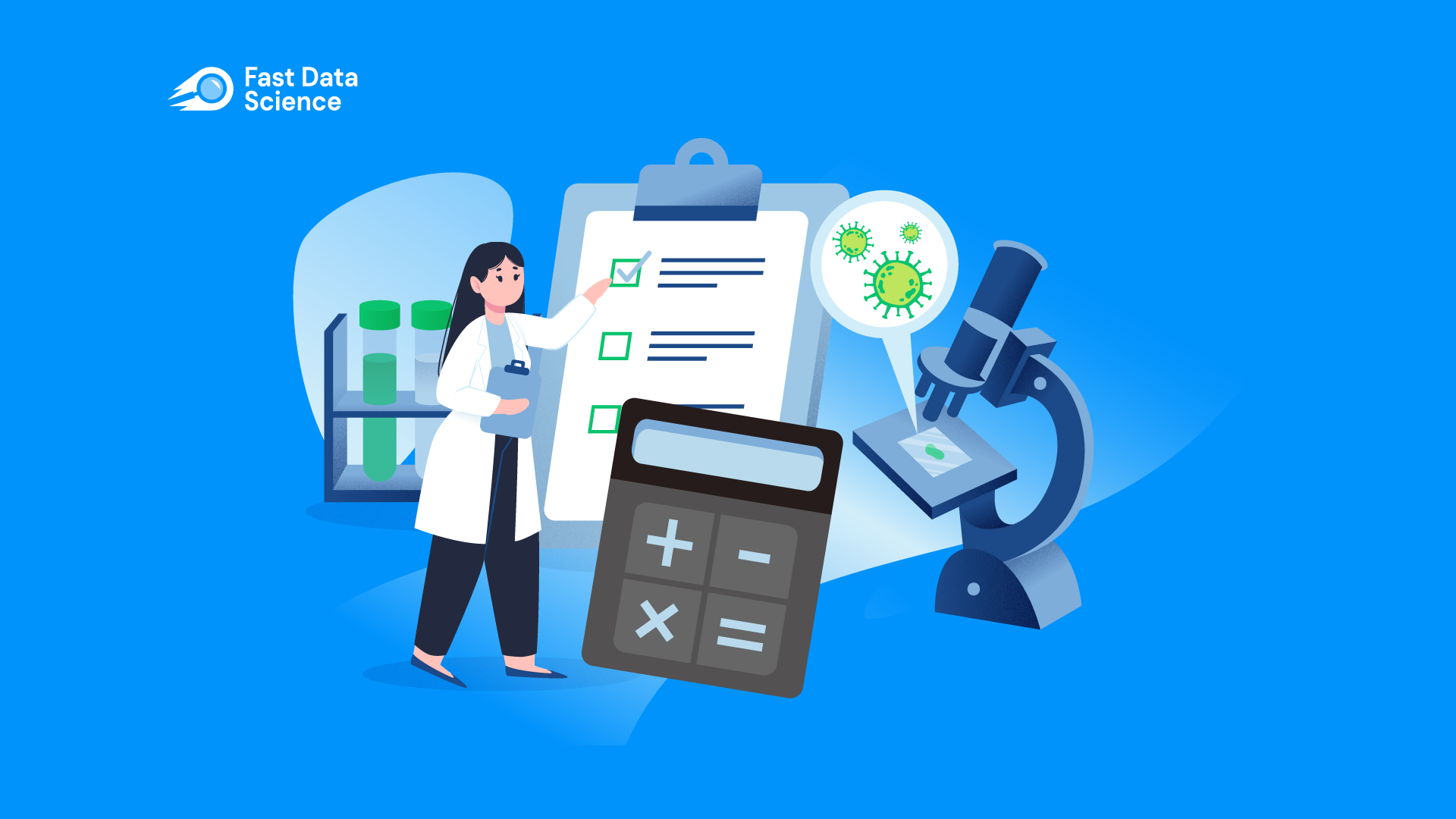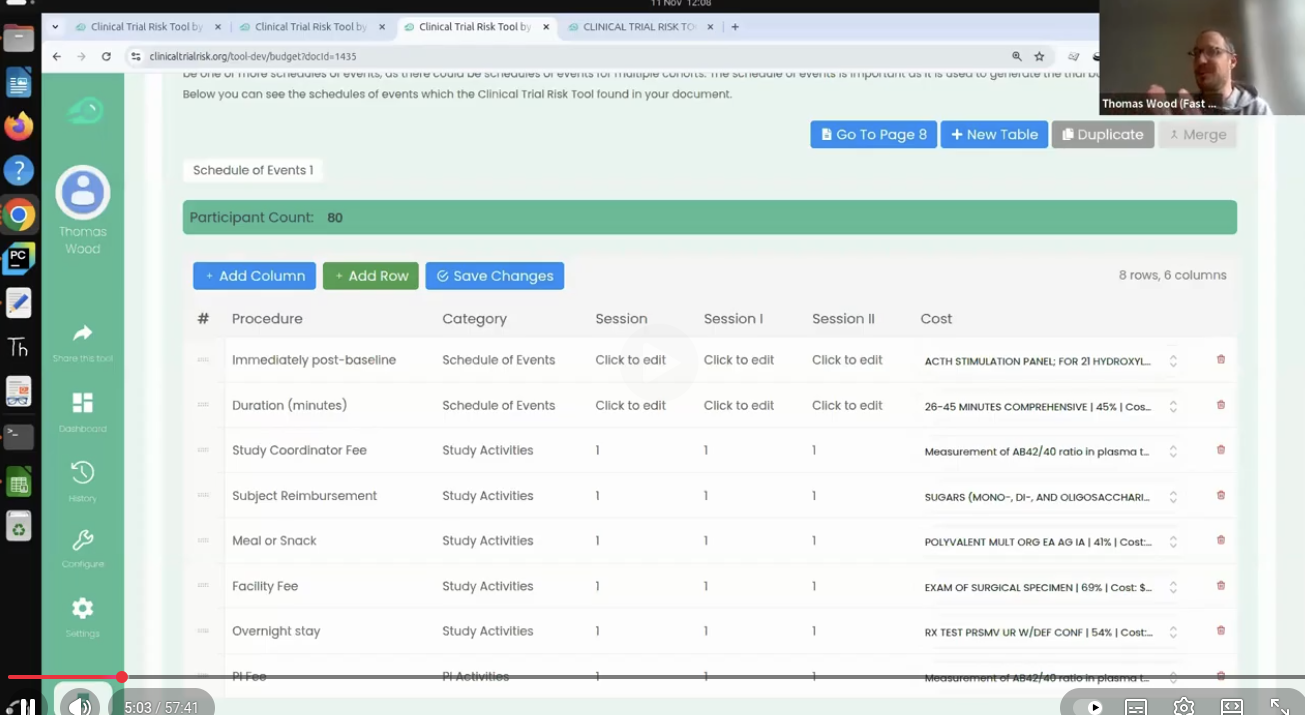
This post originally appeared on Fast Data Science’s blog on LinkedIn.
Clinical trials are essential for advancing medical research but come with substantial financial challenges. One of the most critical aspects of planning a clinical trial is ensuring it is planned carefully to cover all anticipated and unforeseen costs.
In this blog post, we will discuss how the Clinical Trial Cost Calculator by Fast Data Science can simplify this process and improve the accuracy of your budget estimations, leading to smoother, more successful trials.
A poorly estimated budget can lead to delays, overspending, or even the premature termination of a clinical trial. With a clear understanding of the costs involved, research teams can manage resource allocation, participant recruitment, and the overall timeline of the trial. Financial missteps in clinical trials can be highly detrimental, leading to insufficient funding when it’s most needed or an inability to reach critical milestones.
The Clinical Trial Cost Calculator provides a tailored solution for this issue. This AI-driven tool offers precise predictions for trial costs based on critical factors like trial phase, number of participants, and geographic location. Effective resource allocation helps eliminate guesswork from the budgeting process.
Fast Data Science’s tool stands out because it uses artificial intelligence (AI) to deliver cost estimates with unprecedented accuracy. AI can evaluate historical data, recognize patterns, and make informed predictions. It allows trial managers to anticipate potential financial obstacles and adjust their budgets accordingly.
Unlike traditional methods, where cost estimation might rely on generic formulas or outdated data, AI continuously refines its predictions based on real-time information. It is invaluable for small and large trials, particularly those operating across multiple locations.
We are using the cost factors in the Clinical Trial Cost Calculator to improve the Clinical Trial Risk Tool, combining the cost calculator’s business knowledge with Natural Language Processing to predict costs directly from the PDF protocol text.
The calculator adjusts estimates based on your trial’s specific parameters, including its phase, number of participants, and geographic locations. It ensures that the budget is considered and measured.
2. Resource Allocation
With accurate cost estimates, trial managers can allocate resources more effectively, avoiding overspending in some areas while underfunding others. This balance is critical for maintaining a trial’s momentum.
3. Reduction of Financial Risks
Trials often face financial risks due to unexpected costs. The Clinical Trial Cost Calculator helps to mitigate these risks by identifying potential financial bottlenecks early in the planning stages.
4. Better Decision-Making:
With comprehensive data, trial managers can make more informed decisions about how to proceed with the trial. This leads to improved outcomes and ensures that the trial runs smoothly.
5. Improved Trial Outcomes
When budgets are precise, trials can move forward without financial hiccups, leading to more efficient and timely results. This is especially important in large-scale trials, where minor delays or cost overruns can cause significant issues.
One of the most important factors to consider when budgeting for a clinical trial is its phase. To ensure a smooth process, you must accurately predict the challenges and costs of each phase.
Focused on safety, Phase I trials typically involve more minor participants, often healthy volunteers. This phase is relatively short, but costs can quickly increase, mainly if unforeseen safety issues arise.
2. Phase II
In this phase, researchers evaluate a treatment’s efficacy. The costs increase accordingly with a larger participant pool and longer study duration. Data collection and monitoring become more intensive, further increasing the financial requirements.
3. Phase III
Phase III is the most expensive phase of clinical trials. It typically involves hundreds or thousands of participants and aims to confirm the treatment’s efficacy across a broader population. Costs in this phase can be enormous, making accurate budgeting essential to ensure the trial’s success.
4. Phase IV
Also known as post-marketing surveillance, Phase IV studies are conducted after a treatment has been approved. Depending on their scope, these trials can vary significantly in cost, but accurate budgeting is still crucial to avoid overspending.
One of the key challenges in clinical trial budgeting is accounting for unexpected expenses. These can arise from a variety of sources, including:
Serious Adverse Events (SAEs): If participants experience unexpected side effects, additional monitoring or reporting may be required, increasing costs.
Protocol Amendments: Changes to the trial’s protocol, such as dosages or additional safety measures, can increase documentation costs, regulatory submissions, and staff retraining.
Site Monitoring: Some trials require more frequent site visits than initially planned, mainly if issues arise during the trial. It can lead to increased travel, staffing, and operational costs.
Using the Clinical Trial Cost Calculator, trial managers can prepare for these potential expenses and build them into their budgets from the outset. This foresight helps to avoid budget shortfalls and ensures that the trial can continue smoothly even in the face of unexpected challenges.
Accurate cost estimation is an essential part of clinical trial success. With Fast Data Science’s Clinical Trial Cost Calculator, trial managers can make better financial decisions, reduce risks, and ensure that resources are allocated where they are needed most. Whether in the planning stages of a small trial or managing a large-scale, multi-site study, this AI-powered tool can provide the insights you need to optimise your budget and avoid costly mistakes.
Try the Clinical Trial Risk Tool today to streamline your trial budgeting process and set your research up for success.

Thomas Wood presents the Clinical Trial Risk Tool at the Clinical AI Interest Group at Alan Turing Institute The Clinical AI Interest group is a community of health professionals from a broad range of backgrounds with an interest in Clinical AI, organised by the Alan Turing Institute. In the group’s November 2025 meeting, the talk was given by Dr Jeff Hogg, Programme Director, MSc AI Implementation (Healthcare), University of Birmingham and Clinical Innovation Officer in AI, University Hospitals Birmingham NHSFT, titled AI Readiness for Health and Care Provider Organisations.

Guest post by Safeer Khan, Lecturer at Department of Pharmaceutical Sciences, Government College University, Lahore, Pakistan Multi-Arm & Multi-Stage (MAMS) Clinical Trials Design Tips The design of clinical trials is increasingly challenged by the Rising Costs, limited availability of eligible patient populations, and the growing demand for timely therapeutic evaluation. Traditional parallel-group designs, which typically compare a single intervention to a control, are often insufficient to meet these pressures in terms of speed, efficiency, and resource utilization.

You can use the t-test when you want to compare the means (averages) of continuous data between two groups, such as blood pressure or maximum concentration of a drug in urine (Cmax). If you have data with a dichotomous outcome, you can use the Chi-Squared test instead - please try our Chi-Squared sample size calculator. The calculator below will calculate the minimum sample size for you. Your expected effect size d is the standardised effect size according to Cohen’s definition.